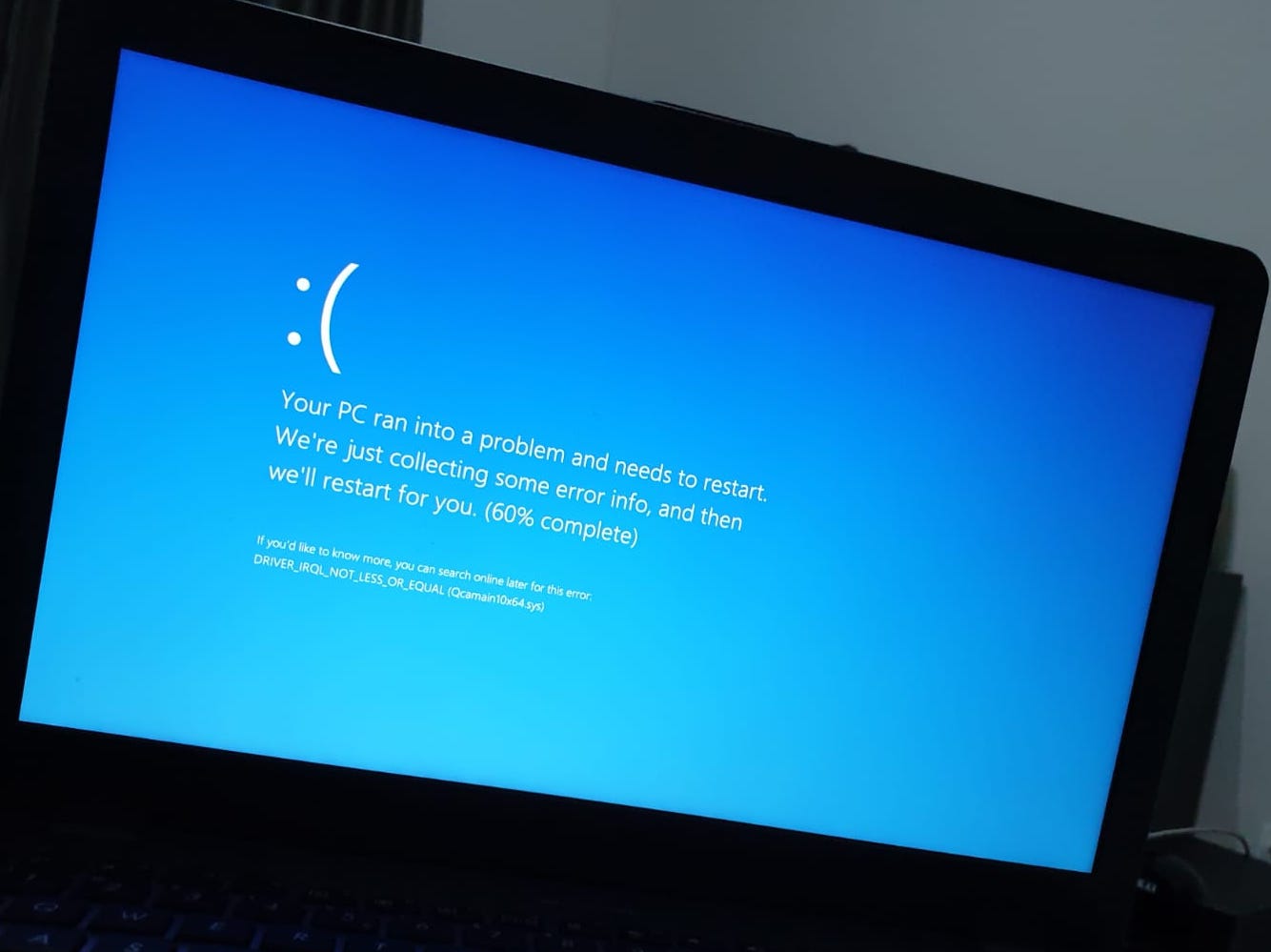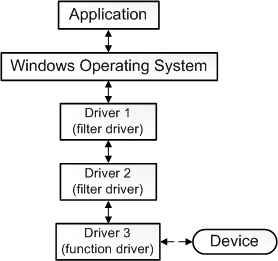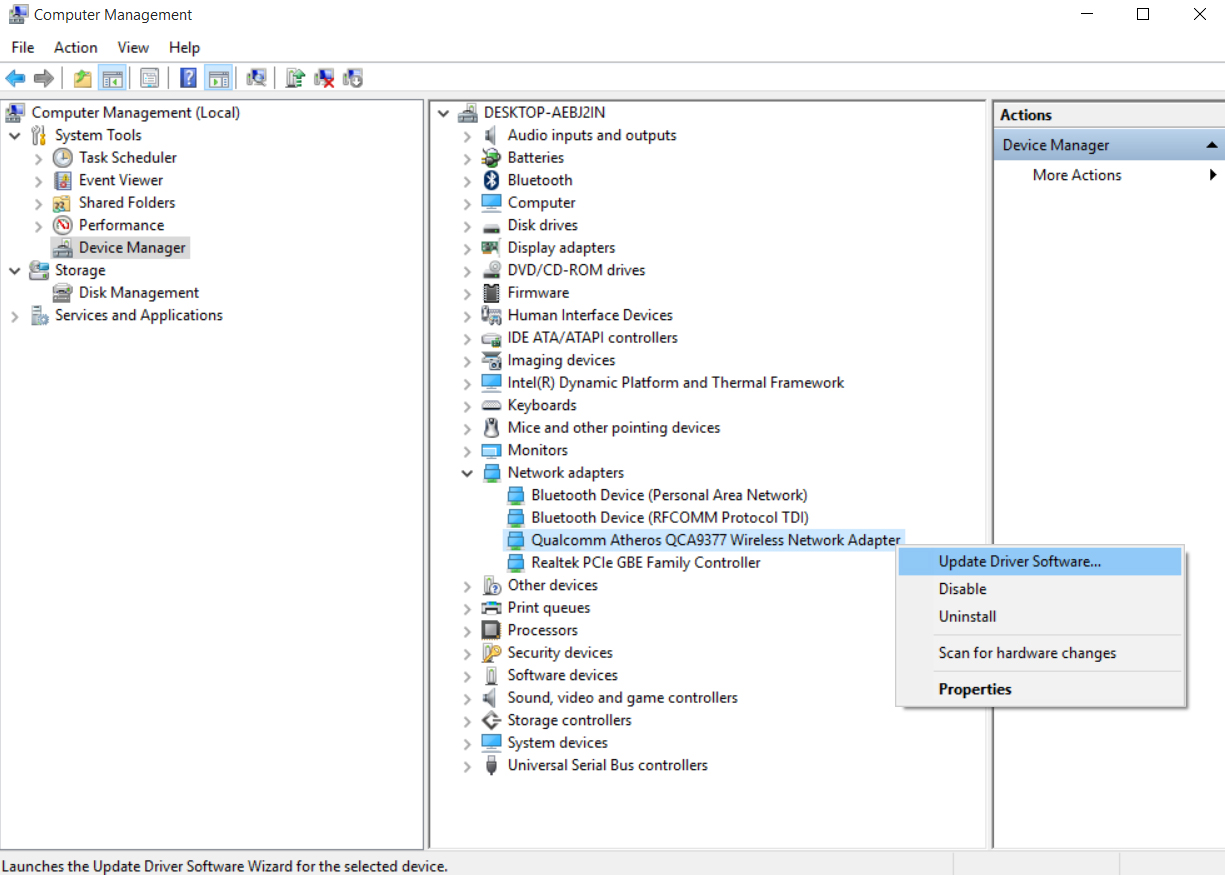OS Windows have the highest coverage on computers worldwide. And they also have the biggest "coverage" when it comes to headaches caused to users.
Compared to macOS, operating system that works only on Mac or Macbook, Windows works on PCs and laptops produced by various companies. From DELL, ASUS, Lenovo and even other brands modele that no more than two people have heard of, all of them can install a version of Windows.
So, we have to deal with various hardware on which the same operating system is installed. From here most of the functionality problems and critical errors appear on Windows.
The biggest problems Windows are the ones that end with BSOD (Blue Screen of Death) and the user inexperienced he does not know what to do to solve the problem.
Today we will focus on the blue screen error: "DRIVER_IRQL_NOT_LESS_OR_EQUAL".
As we can guess from the general error code, "DRIVER_IRQL_NOT_LESS_OR_EQUAL”Or refers to driver problems.
Making a bracket, drivers are those programs (you do not imagine they have the graphical interface) what are the connections between the operating system Windows, application and the device used by it.
For example, the sound application will work on an operating system Windows, you will need a specially created driver to connect the operating system to the sound card or sound output device. Without this driver you will not have sound on Windows. Neither system sounds nor music player or anything else.
Most of the time, for each modeFor the sound card there is a dedicated driver provided by the manufacturer.
It's just an example. Of drivers they also need: network card, Bluetooth, wireless card, mouse, keyboard, monitor and more.
To create an even better environment for errors of the diver, on Windows we also have many scenarios in which the use of a hardware device is possible only with several drivers in the "cascade".
Returning to our subject, "DRIVER_IRQL_NOT_LESS_OR_EQUAL”Is given exactly by a driver that is not working properly. The operating system remains locked with various versions of "Blue Screen":
- "Your PC ran into a problem and needs to restart. We're just collecting some error info, and them we'll restrat for you."
- ":( Your PC ran into a problem and needs to restart. We're just collecting some info, and then we'll restart for you. If you would like to know more, you can search online later for this error: Qcamain10x64.sys."
- "STOP 0x0000000A: IRQL_NOT_LESS_EQUAL - Qcamain10x64.sys"
- "STOP 0x0000001E: KMODE_EXCEPTION_NOT_HANDLED – Qcamain10x64.sys"
- "STOP 0 × 00000050: PAGE_FAULT_IN_NONPAGED_AREA - Qcamain10x64.sys"
- "A problem has been detected and Windows Has Been shut down to prevent damage to your computer. The problem seems to be caused by the following file: Qcamain10x64.sys. "
The problem may arise "suddenly" after a update de Windows 10, when the wireless network card becomes active. That is, after you have connected your laptop or PC to a wireless network.
Qcamain10x64.sys is a file that keeps the Qualcomm Atheros Driver, responding directly to wireless LAN connections.
There are scenarios in which following a update de Windows 10, this driver may have less happy interactions with other drivers and system components Windows 10, causing the operating system to crash.
BSOD Error Resolution: DRIVER_IRQL_NOT_LESS_OR_EQUAL / Qcamain10x64.sys
Solving can be done in two variants. The simplest is in the scenario where the operating system starts up.
Method 1
1. Right-click on “This PC", then click on "Manage".
2. Click on "Device Manager"- You can find the option in the bar on the left, under:"computer Management”→“System Tools".
3. Go to “Network adapters”And right-click on the network driver. In our case: Qualcomm Atheros QCA9377 Wireless Network Adapter.
4. Click "Update Driver Software".
In the next step you have two options where you can update / change the driver. Either use automatic search in which Microsoft will look for and install the latest driver version for your device, or look in your computer or a compatible CD / USB driver.
After installing the new version, it is not necessary to restart the operating system. Everything should work normally.
Ideally, you should have a CD with the original drivers dedicated to the operating system Windows 10. If you bought a PC or laptop when it was a Windows older, Vista or Windows 7, it is best to go to the manufacturer's support page and download / install the latest driver version.
Method 2
The worst part is when the Blue Screen appears before the operating system starts up completely, and "Method 1" is impossible to apply. In this scenario, the only option is to run the operating system Windows 10 in "Safe Mode".
Starting in "Safe Mode” is done depending on modethe laptop. Most of them modethey are accessed by pressing F8, F10 or F12 as soon as the manufacturer / brand logo appears.
After entering "Safe Mode", follow the steps from "Motoda 1", until point 3. At the next stage, right-click on the driver and click "Disable".
Restart the operating system, reinstall the driver and you're done update.
If the problem persists, you will need to save your original driver (on a portable (USB Stick)) made available by the device manufacturer and install it offline.




I just tested, let's see if it works. Thanks for the article!